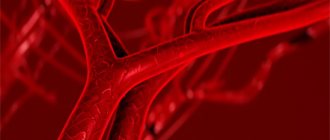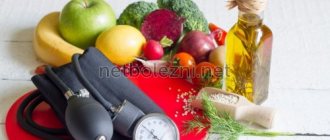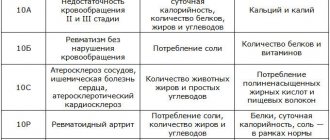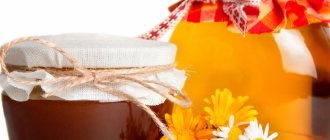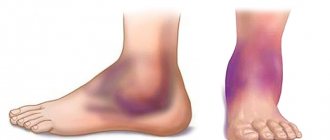Home — For the public
- Map of medical organizations
- Vaccination
- Clinical examination
- Fluorography
- Addresses and opening hours of clinics
- Emergency rooms
- Oncology
- Where to take an HIV test
- Healthy child's office
- Services
- Prevention of CVD
- Disease Prevention
- World Patient Safety Day
- Newspaper "Medical News"
- specialist
- School of Health
— Disease prevention
- HIV infection
- All about vaccination
- All about proper nutrition
- Hepatitis
- Flu
- Dementia
- Schoolchildren's health
- STD
- Tick-borne encephalitis
- Whooping cough
- Measles
- Legionellosis
- Meningococcal infection
- Oncology
- Acute intestinal infection
- Pediculosis
- First aid
- Pneumococcal infection
- Pneumonia
- Prevention of rabies
- Dependency Prevention
- Rotavirus infection
- Diabetes
- Cardiovascular diseases
- Injuries
- Tuberculosis
- Tularemia
- Physical activity
- Obstructive pulmonary disease
- Exotic infections
- Ecology
- Why is swimming in ponds dangerous?
— Cardiovascular diseases — Nutrition for cardiovascular diseases
Can a certain diet improve the condition of a person with heart disease or is this another myth? To answer the question, it is enough to recall WHO data that lifestyle has up to 50% of the impact on health. And diet is as important a part of lifestyle as physical activity and the presence or absence of stress. A diet for cardiovascular diseases (or CVD) helps maintain normal body weight, protects against the development of diabetes mellitus, and increased levels of “bad” cholesterol. Every person can adjust their diet and monitor it.
Changes in the body and principles of diet
Atherosclerosis and hypertension are the main causes of heart attacks and strokes. What changes occur in the body during the development of cardiovascular diseases?
Increased pressure “wears out” the walls of blood vessels. They become more dense. Aneurysms (expansion of the lumen) occur; the wall in these places becomes thinner and can easily “rip” when blood pressure fluctuates.
The process of formation of atherosclerotic plaques on the walls of blood vessels begins already in infancy, but their size and stability depend on age, lifestyle, and hereditary characteristics. The trend towards a negative attitude towards cholesterol is already a thing of the past, but the stereotype that “it’s better without it” is still alive. Endocrinologists say that about 85% of cholesterol circulating in the blood is synthesized in the body by liver cells and only about 15-20% comes from outside.
Fats are not only a “filler” for cholesterol plaques, but also a material for the construction of all cell membranes and hormones. These are vitamins and natural protection of internal organs from displacement (shock absorption), and the person himself from hypothermia. This means that a complete abstinence from animal foods may not improve, but worsen, your health. But what can be changed? You can influence the amount and composition of fats entering the body.
Speaking about damage to the walls of blood vessels during hypertension and atherosclerosis, we must remember the proteins collagen and elastin. They are responsible for their firmness and elasticity, the smoothness of the inner layer of the vascular wall. The development of atherosclerosis leads to the fact that the walls of blood vessels become more rigid, blood flow decreases, and the heart “has” to put in more effort to push through the required volume. Blood supply deteriorates, the load on the heart increases. The process of restoration of the vascular wall is associated not only with a sufficient amount of protein in food, but also with the presence of ascorbic acid, which takes part in the synthesis of its body structures.
The body needs carbohydrates, first of all, as a quick way to replenish energy. But the excess amount of sugars does not “go away”: they become material for fats. A person’s weight increases, and along with it, the load on the heart increases.
According to the latest WHO recommendations, the amount of table salt (or sodium chloride) that a person receives per day should not exceed 5 g. A larger amount leads to edema and increased stress on the heart. Unfortunately, people are accustomed to considering only the contents of a salt shaker as salt. They forget that sodium chloride can easily “hide” in mayonnaise, ketchup, a piece of sausage, or even in cream cheese.
Having listed the changes that occur in tissues, we can say that the diet for the heart and blood vessels must meet the following requirements:
- Supply the body with all nutrients.
- Do not go beyond the recommended daily caloric intake.
- Prevent fluid retention (edema).
- Contain a minimum amount of “harmful” fats.
- Provide the body with enough protein.
Vitamin therapy, the intake of minerals and trace elements are justified only in cases where the diet does not provide them with food in sufficient quantities.
Potassium and magnesium deserve special attention: these ions have a beneficial effect on the heart and “calm” the nervous system. This means that you need to take care to include foods rich in them in your diet.
What foods are prohibited for heart and vascular diseases
Prohibited foods for cardiovascular diseases and diet No. 10 include:
- marinades, pickles, canned food;
- meat and mushroom soups and broths;
- fried meat and fish, fatty meats;
- legumes in large quantities;
- fish roe;
- store-bought sauces and ketchups;
- instant products, snacks and fast food;
- fried potatoes;
- liver, brains, kidneys, sausages and smoked meats;
- baked goods and chocolate, cakes and cream pies;
- restrictions on onions, garlic, radishes, sorrel;
- strong coffee and tea, cocoa, sweet soda.
What can and cannot be eaten by patients with heart disease?
How can dietary requirements relate to general nutritional recommendations? Endocrinologists describe the diet as being as close as possible to the well-known Mediterranean diet (green salads, vegetables, seafood, olive oil). Cardiologists lean on treatment table No. 10.
In general, the diet for a patient with CVD must meet the following requirements:
- Sufficient amounts of plant and animal protein foods. Preference should be given to fish and other seafood, including them in the diet 2-3 times a week.
- Refusal of fatty and fried foods, products made from white flour.
- Include at least 500 g of fresh vegetables and fruits in your daily diet.
- Refusal of foods high in salt and trans fats.
Healthy foods for the heart and blood vessels
Dividing familiar dishes into “healthy” and “harmful”, a person with heart disease should make a list of products for his new diet. It will include:
- foods rich in potassium: dried apricots, bananas, baked potatoes (with skin), tomatoes;
- nuts and dried fruits;
- berries and fruits: lemon and all citrus fruits, viburnum, pomegranate, grapes;
- non-starchy vegetables (pepper, radish, cucumber, zucchini, eggplant, pumpkin);
- aromatic herbs and green salads;
- Natural fermented milk products (without sugar, fillers, flavors), cottage cheese with a fat content of 2-5%;
- fish, including fatty varieties (mackerel, salmon);
- products that are sources of essential omega-6 fatty acids or oils made from them (sesame, avocado, olives, peanuts, hazelnuts).
When asked what foods help lower cholesterol, naturopaths list: carrots, tomatoes, nuts, peas, salmon and garlic. Perhaps the benefits of some of them are exaggerated.
Harmful products
Having compiled a list of recommended foods, cardiologist patients should also remember well what they should not eat if they have CVD. The following are subject to exclusion or significant limitation:
- alcohol;
- some fats;
- salt.
Alcoholization is closely associated with the risk of CVD. But does this mean that a patient with uncomplicated hypertension should completely give up wine? No, you shouldn't. Damage to health occurs from alcohol abuse. Periodic consumption of 25-30 ml of strong alcohol, 100 ml of wine or 280 ml of beer (per day) is acceptable.
Speaking of fats, cardiologists advise limiting the amount of trans fats to 2 g/day. These compounds increase bad cholesterol (LDL) levels, promoting the progression of atherosclerosis. Major sources may include margarine, icing, candy, bread and baked goods. Trans fats, such as palm oil, are often used to adulterate dairy products. Nutritionists urge you not to let your guard down at the counter with attractive cheeses, cottage cheese or condensed milk. In addition, a large amount of even the healthiest oil is more likely to do harm than good.
Consumption of 5 g or more of salt per day increases the risk of CVD by 15-17%. Particular attention should be paid to the amount of sodium chloride in food for persons who have had a heart attack or coronary artery stenting surgery.
How to cook food
Methods of food processing affect the properties of finished dishes. Here are the main recommendations:
- Before cooking, it is necessary to remove (cut) fat from meat, and remove the skin from poultry.
- Cooking methods: boiling, baking in the oven, foil, grilling. Vegetables are best consumed fresh.
- When cooking in a frying pan, use non-stick cookware. To avoid a large amount of fat in food, you need to place food on a heated surface, only greased with oil or add a little water to the pan.
- The amount of vegetable oil per 3-5 liters of soup should not exceed 1 tablespoon. Cook in vegetable broth and add chopped boiled meat only before removing from the stove.
- Refrigerate cooked foods that may contain large amounts of fat (such as roast pork). Skim and discard any fat that congeals on the surface.
- It is necessary to stop using spreads, mayonnaise, and coconut oil. Watch the fat content of dairy products.
Menu for heart attack prevention
The Mediterranean diet is recommended for patients at high risk of developing a heart attack. Foreign clinical studies, the results of which were published in the New England Journal of Medicine back in 2013, confirmed that switching to such a diet can reduce the likelihood of an attack by 30%. Cardiologists attribute the benefits of a diet high in fiber, monounsaturated fat and low in saturated fat.
What is recommended to be included in the menu in sufficient quantities, and what should be removed or consumed in moderation? Here are the main recommendations:
- Food is divided into 3 main meals; nuts, vegetables or fruits can be used as snacks.
- You should adhere to the standard ratio of BZHU, pay special attention to the composition of fats: the amount of saturated fats is no more than 8% of the total daily calorie content.
- The basis of the diet should be vegetables, fruits, grains, legumes, seafood, fish, nuts and olive oil.
- Consumed in moderation: eggs, poultry, cheeses and other dairy products. Red meat is allowed no more than 1-2 times a week.
- Acceptable drinks: pure water, tea or coffee without sugar and milk, red wine - no more than 1 serving (100 g) per day.
- Completely exclude semi-finished products, sausage, confectionery, white bread. In addition to vegetables and fruits, whole grain bread and pasta and cereals can be sources of carbohydrates.
Diet No. 10, as the main diet for cardiovascular diseases
When prescribing dietary therapy for cardiovascular diseases, diets No. 10, 10a, 10c, 10i are used. In difficult cases, specialized diets can be used, such as potassium , hyposodium , fruit and vegetable diets and others.
For diseases of the cardiovascular system, atherosclerosis, rheumatism , heart defects, hypertension, and also after a myocardial infarction, diet No. 10 is prescribed. This diet promotes the speedy restoration of impaired blood circulation, improves metabolism, and also promotes the rapid removal of metabolic products from the body and stimulates the activity of the kidneys and liver.
The diet is characterized by limiting the consumption of table salt (up to 5 mg), coarse fiber and liquid (up to 1.5 l) and increasing the intake of foods containing calcium salts. These are dried apricots, dates, prunes, grapes, bananas, baked potatoes, broccoli, citrus fruits and cabbage. And also products containing magnesium salts: buckwheat, oatmeal, bran, nuts. The main goal of diet No. 10 is to reduce the load on the heart during digestion.
Nutrition principles when following diet No. 10:
- food should be as varied as possible;
- limiting foods that are a source of plant fiber;
- an increase in the diet of foods that help normalize fat metabolism;
- increase in foods containing alkaline compounds (milk, cabbage, carrots, apples, lemons);
- increasing the content of vitamins (groups A, B, PP, E, retinol, ascorbic acid), micro- and macroelements in the diet (potassium, calcium, phosphorus);
- frequent meals 5-6 times a day in small portions.
Diet No. 10 is complete, hyposodium, but the content of nutrients in it is reduced, as well as substances that excite the nervous system (strong coffee, tea, broths); the total calorie content is up to 2800 kcal. Food is boiled, baked or steamed.
What to eat when you have angina
Angina pectoris, or coronary heart disease, is the most unstudied pathology in cardiology. But doctors know for sure that proper nutrition for such patients ensures long-term remission. What to eat when you have angina:
- buckwheat and millet porridge;
- boiled rice with the addition of dried apricots and raisins;
- seaweed;
- fresh, baked fruits (bananas are generally recommended for daily consumption);
- sea or river fish, you should choose fatty varieties;
- any dietary meat;
- milk and its derivatives;
- vegetables in any form.
For this disease, it is extremely important to reduce the patient’s weight, because obesity is one of the factors that provoke angina pectoris. In principle, general nutritional recommendations make it possible to normalize metabolism and reduce weight. Moreover, nutrition for coronary heart disease involves avoiding sweets, baked goods, and alcoholic beverages.
Heart disease, regardless of what kind of pathology occurs and in what form it occurs, implies a refusal of certain foods. Moreover, doctors claim that there can be no concessions here - only strict adherence to the nutritionist’s recommendations along with therapy will help avoid serious complications and life-threatening conditions. How to restrict nutrition in case of heart disease:
- exclude fats of animal origin, including butter - they are provoking factors for the formation of cholesterol plaques, which clog blood vessels and force the heart to work harder, “for wear and tear”;
- refuse flour products and those products that are fast carbohydrates;
- chocolate, sweets, lemonades, desserts that can be replaced with honey, dried fruits, marshmallows, marshmallows are prohibited;
- Alcohol is strictly prohibited, including cocktails and beer.
It is important not to self-prescribe, but to undergo examination by a cardiologist. The specialist will, firstly, make a diagnosis, and secondly, refer you for consultation to more specialized specialists - in particular, to a nutritionist. If a patient needs to lose weight, the doctor will have to determine the level of physical activity and its type - many workouts are simply prohibited for heart disease. Only with such a complex effect on the body and powerful support for the heart will it be possible to cope with diseases, prevent serious problems in the future and, possibly, enter a period of long-term remission.
Consultations with a cardiologist and nutritionist will be useful for everyone over the age of 40, even if there are no symptoms of heart problems. You can make an appointment on our Dobrobut website. com.
Sample menu for the day, according to diet No. 10
Breakfast (8 am) - cottage cheese with sour cream, semolina or rice porridge with milk, bread with butter, tea with milk.
Lunch (13 hours) - pureed vegetable soup, steamed meatballs in white sauce, crumbly rice porridge, baked apples or pearl barley soup with vegetables, boiled meat with carrot puree, tea.
Afternoon snack (16:00) - omelet and apple-carrot puree, rosehip infusion.
Dinner (19 o'clock) - buckwheat cottage cheese casserole, vegetable cutlets with prunes, jelly or curd pudding, potatoes with boiled fish, jelly.
Late dinner (22:00) - a glass of yogurt or fruit juice, a biscuit.
What to eat if your heart hurts
Even if the diagnosis has not yet been made by a cardiologist and the first discomfort in the area of the anatomical heart has appeared recently, it is worth adjusting your diet. In this case, significant support for the heart will be provided and the risk of developing serious cardiac pathologies will be reduced. What to eat if your heart hurts periodically or constantly:
- Coffee, chocolate and strong black tea, energy drinks, and any sweet carbonated drinks are excluded. They put too much strain on the heart muscle, causing the heart to beat faster.
- The amount of salt consumed is reduced. This spice retains water in the body and the heart has to work harder, moving a significant amount of blood through the vascular bed.
- Sausages, fast food, semi-finished products, marinades, and pickles are completely excluded from the menu. They contain not only a large amount of salt, but also chemical additives that negatively affect the functioning of the heart.
- The diet should include fish and seafood, lean meat, milk and dairy products, vegetables and fruits in any form.
- Meals should be fractional - every 3 hours you need to eat small portions of food. Bloating and a full stomach put pressure on the autonomic nerves, which are “responsible” for the stable functioning of the heart.

